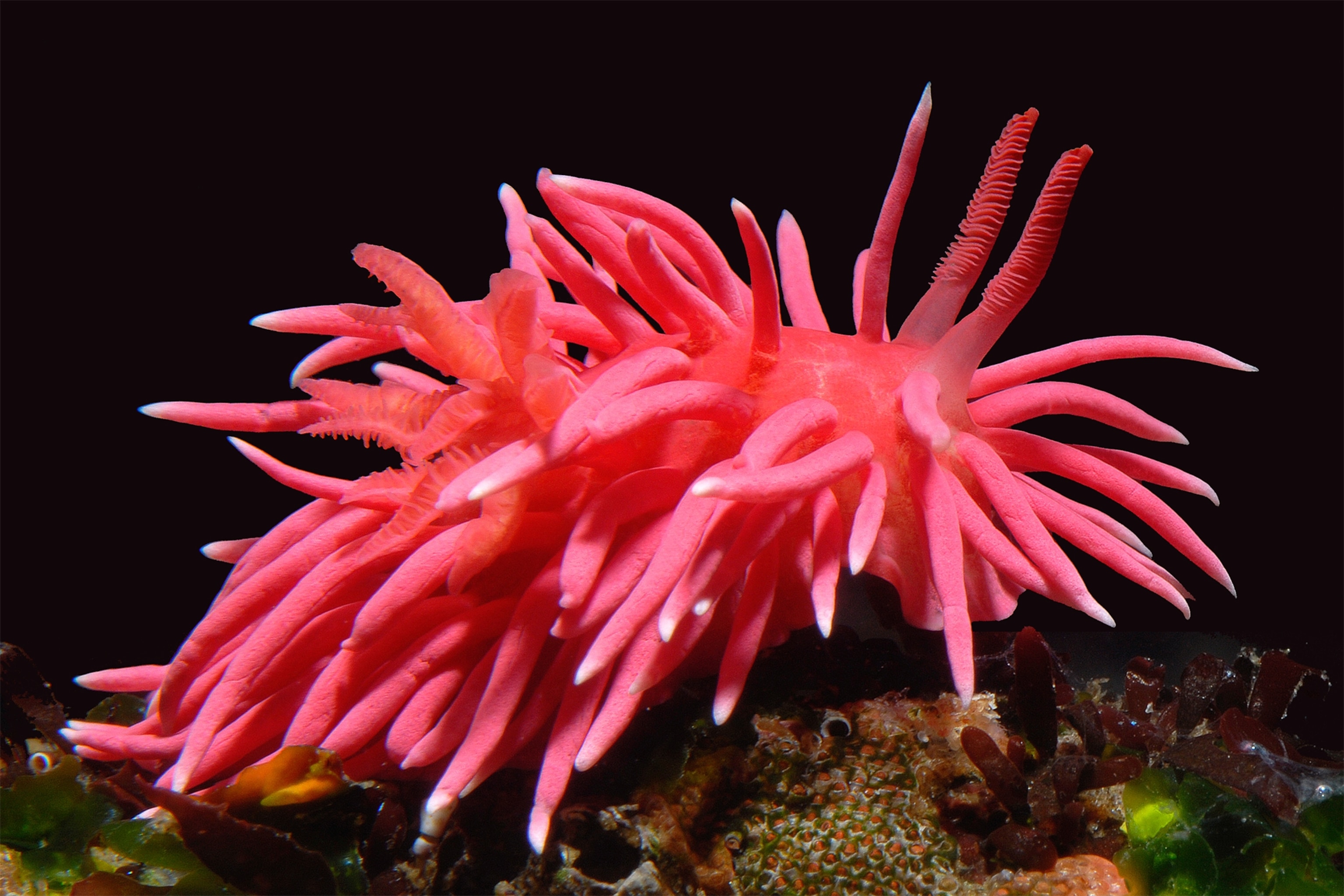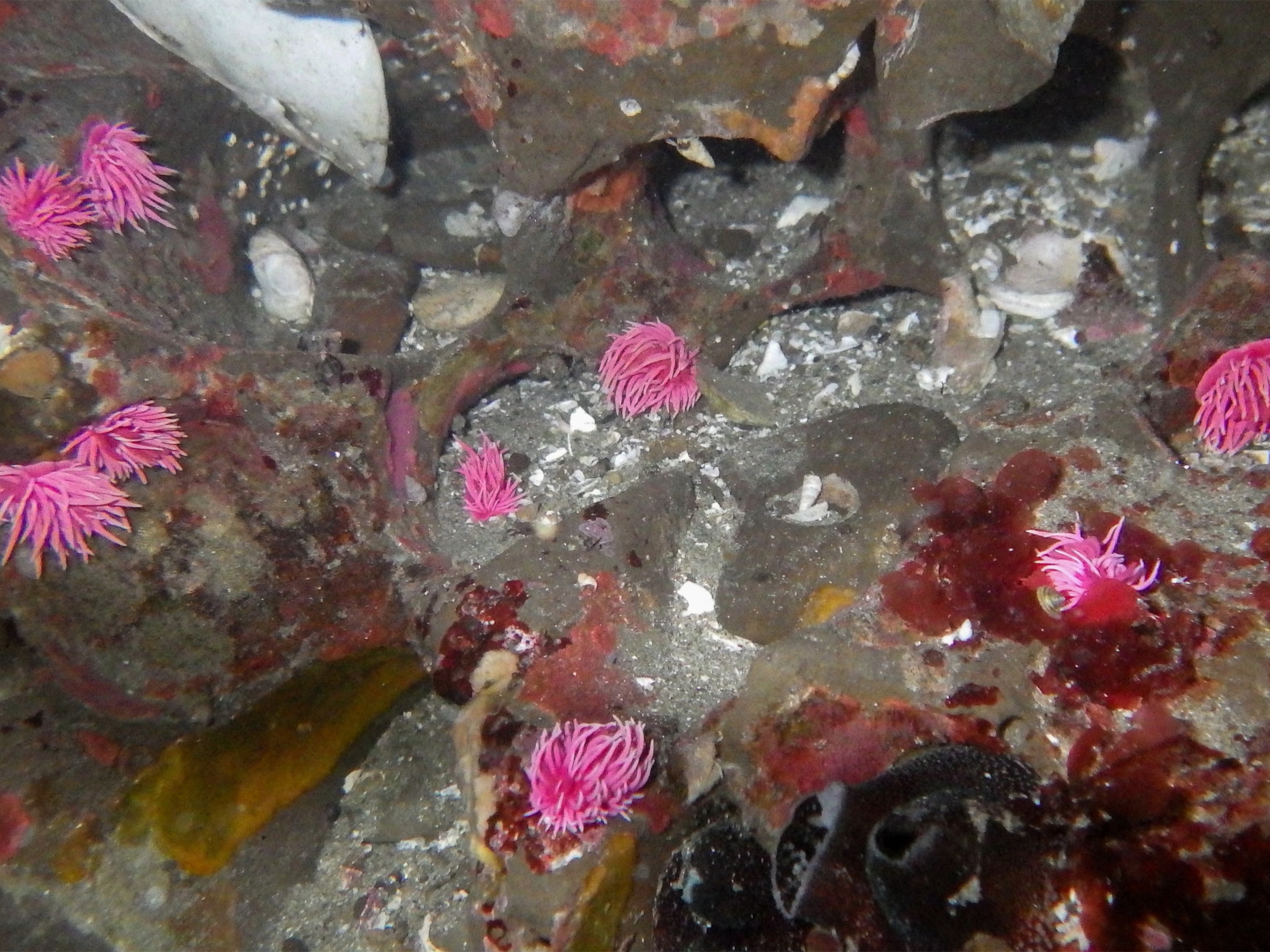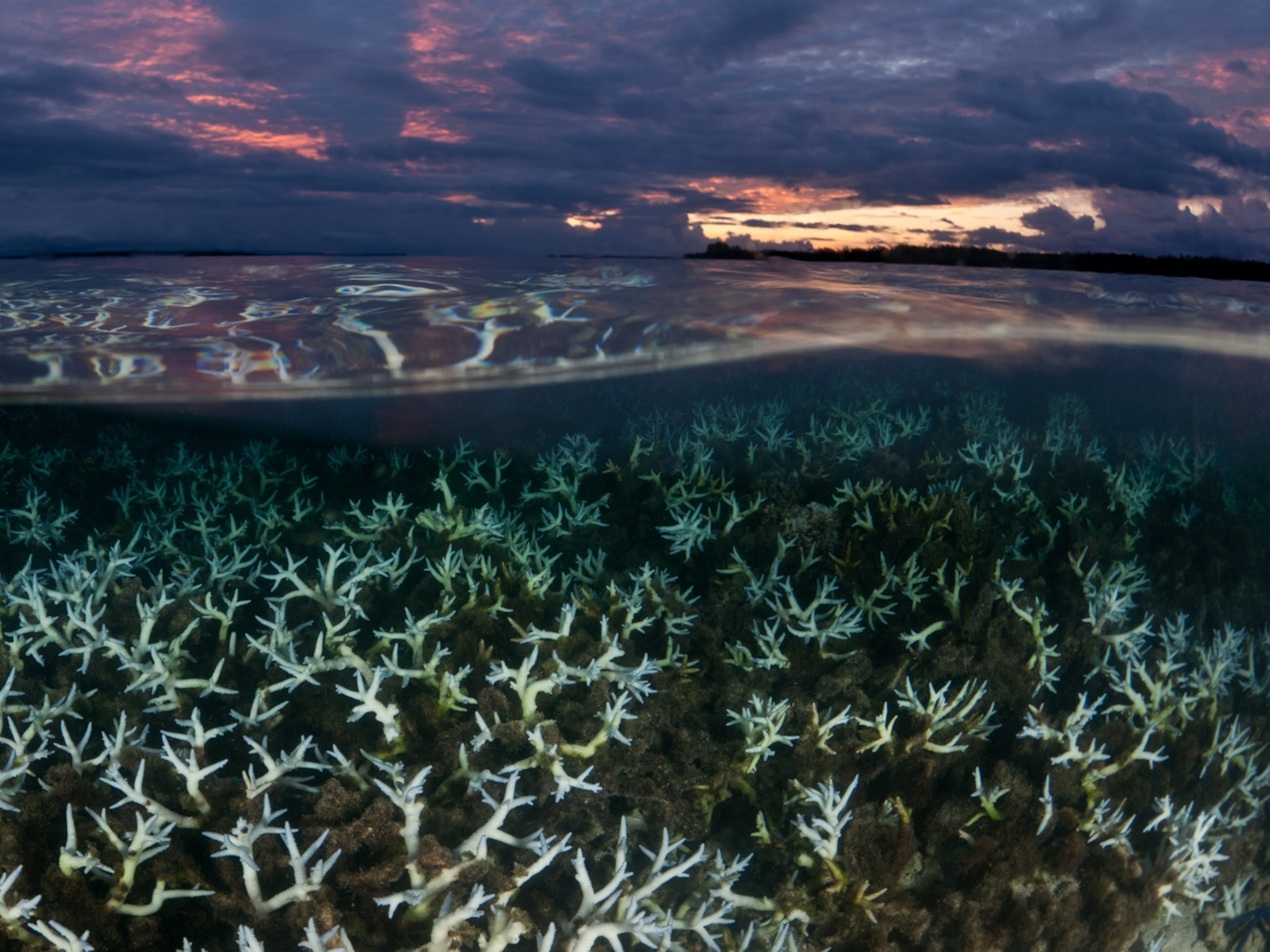
Bright Pink Sea Slugs Invading New Habitats Due to Global Warming?
The colorful invertebrates are moving north along the California coast as ocean waters warm, scientists say.
Brightly colored sea slugs have invaded the central and northern California coast—and scientists aren't exactly tickled pink.
That's because the arrival of the soft-bellied marine creatures, which typically prefer warmer waters off southern California, could be a sign of serious shifts to the marine ecosystem due to climate warming.
The pink sea slug, officially called the Hopkins' rose nudibranch, hardly ever shows up north of San Francisco (see coastal map). The last time hordes of the inch-long (2.5 centimeters) mollusks ventured that far up the coast was during a seasonal climatic phenomenon called El Niño, which brought strong rains and ocean warming to the region more than 16 years ago. (See more pictures of colorful sea slugs.)
Since there's no El Niño right now, researchers are wondering if the current rosy spectacle along the northern coast could instead be a result of warmer waters caused by global climate change. (Take a quiz: "What You Don't Know About Climate Change Science.")
The nudibranchs aren't considered harmful to the northern California ecosystem per se, but their arrival is a reminder that marine species are staking new territories in response to warmer waters—migrations that could shake up the ocean environment as we know it.
"We went years without seeing any, or we'd see one or two at most," said Terry Gosliner, curator of invertebrate zoology at the California Academy of Sciences in San Francisco.
But in recent months, Gosliner and colleagues have spotted hundreds of the vibrant pink creatures in rocky pools up and down the California coast.
Some of the early sightings were made by volunteer nudibranch enthusiasts who posted photographs documenting the pink population boom on iNaturalist, a citizen-science platform.
This nudibranch gets its brilliant hue from grazing on pink bryozoan, or tiny colonial marine animals. "You can see it from ten yards [30 feet] out and know immediately what it is," Gosliner says. (See "Photos: Hot-Pink Slug and 5 Other Rosy Animals.")
Then, in January, a survey found 64 sea slugs in a single tide pool—that's "off the charts," he said.

In Hot Water
The pink slugs' return isn't a surprise—Gosliner and colleagues, who have spent decades surveying coastal sites for nudibranchs, predicted in a 2011 paper that nudibranch populations would surge again when El Niño conditions return.
What is surprising is that the current influx of sea slugs seems unconnected to an El Niño event. (Try your hand at National Geographic's nudibranch jigsaw puzzles.)
Measurements of sea surface temperatures in the northern region of Monterey, California, dating back to 1919, show the ocean has been gradually warming.
At present, northern California ocean waters are 3 to 5°F (1.6 to 2.7°C) above the long-term average, according to the National Oceanic and Atmospheric Administration.
Ocean Sensors
John Pearse, a retired marine ecologist at the University of California, Santa Cruz, suspects the warming ocean also contributed to the massive starfish die-off that began in late 2013.
In 2014, scientists identified the culprit virus, and some think warm waters concentrated unusually high numbers of starfish in an area, allowing the pathogen to gain a foothold. (Related: "Why Are Millions of Starfish 'Melting'?")
The ocean climate is "changing rather quickly," said Pearse.
"But how much of it is part of the changes from having more carbon dioxide in the atmosphere, and how much is due to natural oscillations, is hard to determine.
"A colleague of mine said, 'We can have all the instruments we want, but the organisms are there sensing things 24/7,'" Pearse added.
"I think nudibranchs could be one of the sensors we can follow."
Follow Esther Landhuis on Twitter.





